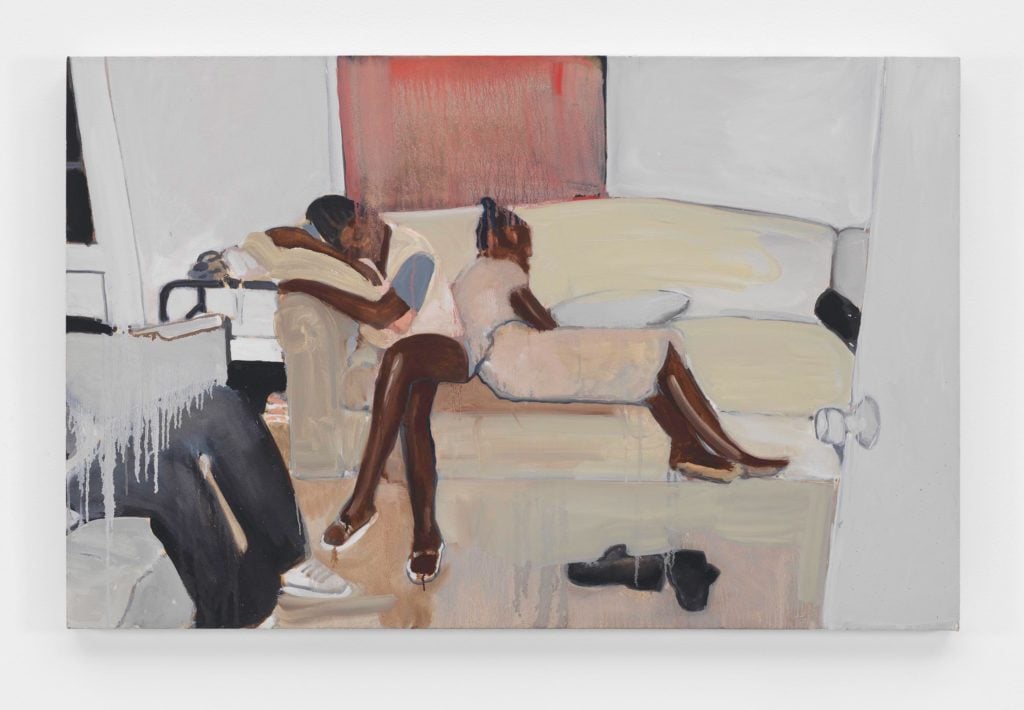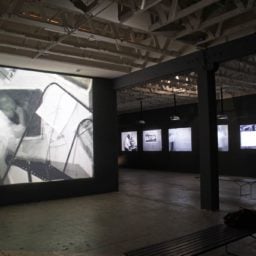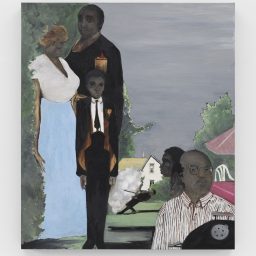When Noah Davis died of cancer at age 32, he left behind a legacy that most artists would never dream of in a lifetime: A gifted painter with a finger on the pulse of his generation, a scrappy organizer who turned three derelict storefronts into a Los Angeles cultural phenomenon, and now, five years after his untimely death, a star of the blue-chip art world.
An absorbing survey of Davis’s work, organized by curator Helen Molesworth, is now on view at David Zwirner. The show blends the artist’s sensitive, moody paintings with an installation modeled on the offices at the Underground Museum, an alternative art space in Los Angeles that Davis co-founded with his wife, artist Karon Davis, in 2012.
“On the one hand, I wanted people to get a sense of the breadth of what he did and what he was capable of. On the other hand, I didn’t want it to be so comprehensive that no one would do another show,” Molesworth said during a recent visit to the gallery.
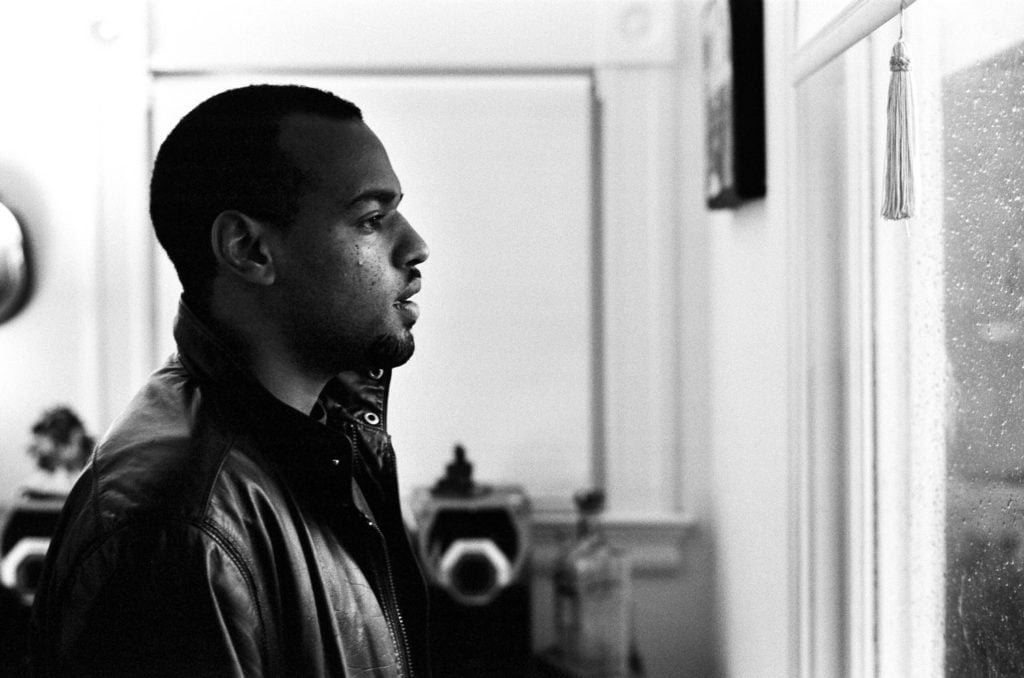
Noah Davis. Photo by Ed Templeton, courtesy of the Underground Museum.
Molesworth first met Davis at the Underground Museum in the fall of 2014, when she was still chief curator of the Los Angeles Museum of Contemporary Art. Molesworth was actually there to see Davis’s filmmaker brother, Kahlil Joseph, who is known for his collaborations with Beyonce and Kendrick Lamar, but the three ended up talking for hours.
“We both went to the church of art,” she says of her immediate bond with Davis. “He was an extremely outgoing, loquacious person. He was funny and had a big, barrel-chested laugh. He was opinionated and inquisitive, which don’t often go hand in hand.”
Soon after their meeting, Davis approached Molesworth with the idea of a collaboration between LA MoCA and the Underground Museum, then still a humble operation that doubled as Davis’s studio.
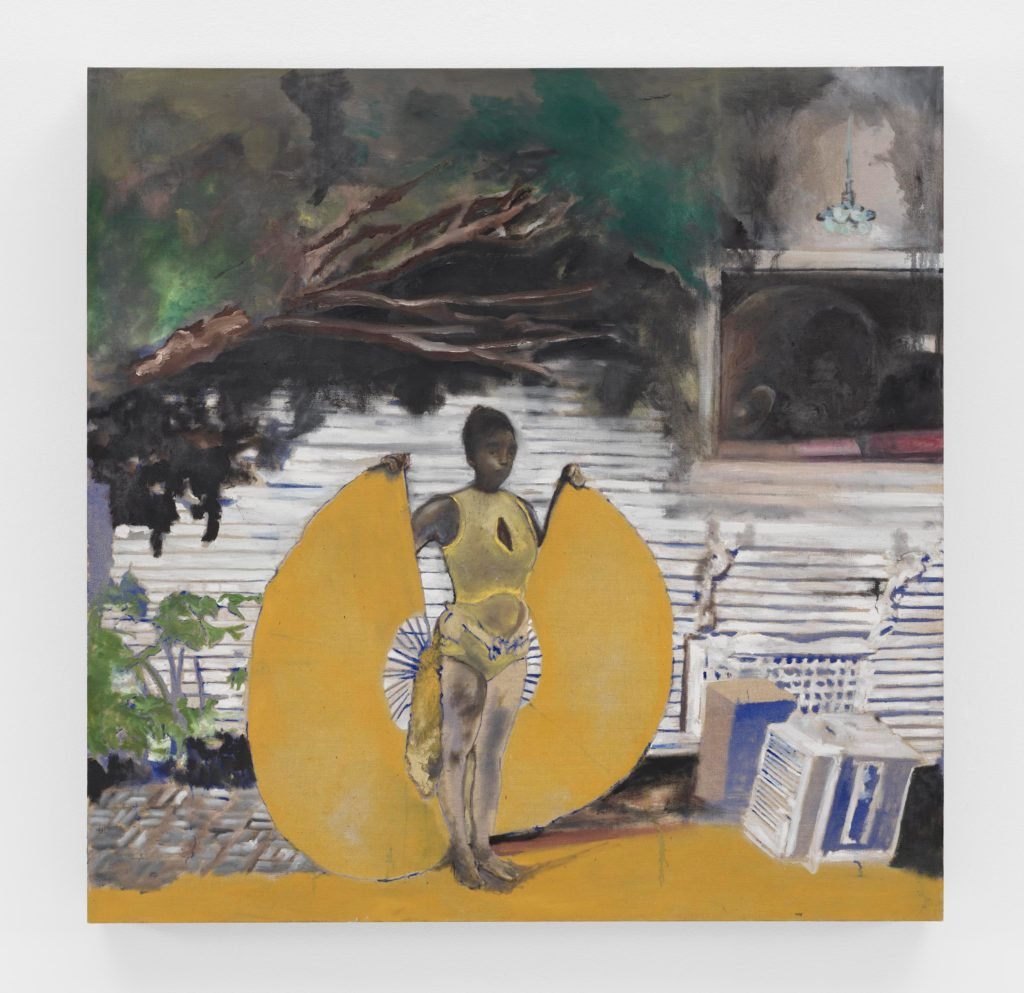
Noah Davis, Isis (2009). © The Estate of Noah Davis. Courtesy of the estate of Noah Davis.
By that point, “he had asked a lot of museums in town if they would be willing to lend work. Everyone said no, and for completely legitimate reasons—the museum was three dingy storefronts on Washington,” Molesworth recalls with a smile.
“To be really honest, I don’t know why I said yes,” she says. “I guess I trusted the situation and I was looking for another way to work. I wanted a new, more diverse audience.”
But soon after agreeing to the partnership, for which MoCA would lend works from its collection to the Underground Museum for a series of exhibitions, Davis was diagnosed with a rare form of soft-tissue cancer. He died the day the first MOCA-supported show opened at his space.
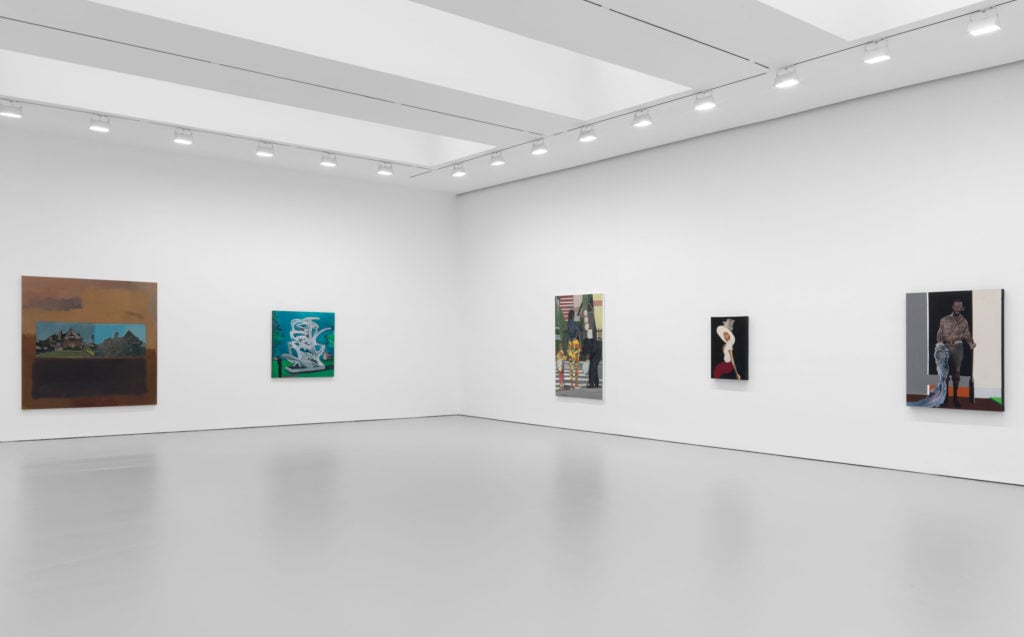
Installation view of “Noah Davis,” David Zwirner, New York, 2020. Courtesy of the estate of Noah Davis and David Zwirner.
Davis left behind plans for the museum with Molesworth, Joseph, and his wife, all of whom continue to oversee the space today.
“That was Noah’s mad genius,” says Molesworth. “Because we had all made a promise, and because the loss was so grave, everyone who was involved just showed up and made stuff happen. Nobody held back. It was a testament to the effect he had on people.”
The museum has since evolved into a hotbed of creative activity, a modern-day salon where the black artists and thinkers of our day—people like Fred Moten, David Hammons, Kamasi Washington, and Solange—hold court and hang out. Bring up Davis’s name today and it’s likely the first of his accomplishments to be mentioned. But the Zwirner show, which, more than anything, showcases the artist’s talent as a painter, may change that.
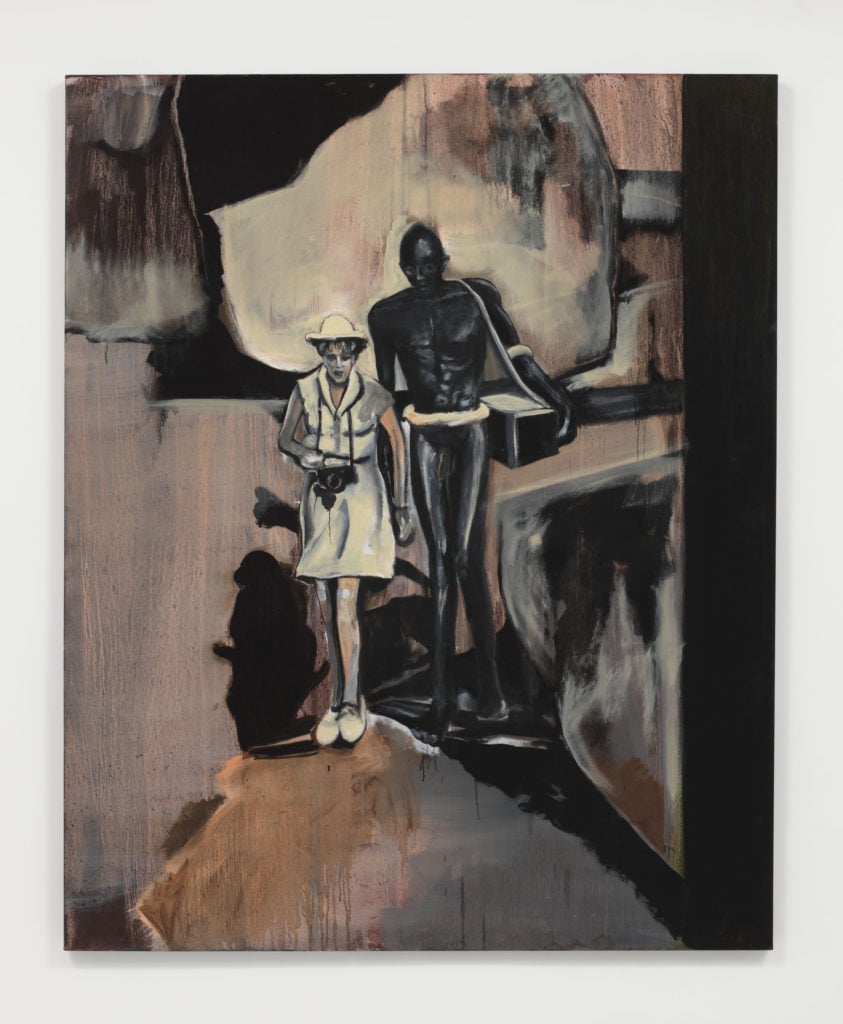
Noah Davis, Leni Riefenstahl (2010). © The estate of Noah Davis. Courtesy of the estate of Noah Davis.
Davis’s dreamy scenes of domestic intimacy, or quiet moments of urban mundanity, touched with the occasional hint of magical realism, feel like they were made yesterday. And they come at a time when the market for figurative painting that foregrounds the black experience has exploded.
“Things pop and we don’t understand that of course they’ve been percolating all along,” says Molesworth. “Noah was very much a part of a generational ethos. A bunch of kids were coming up in their 20s and 30s and were rethinking what they wanted from art.”
“Noah Davis” is on view at David Zwirner through February 22, 2020.
